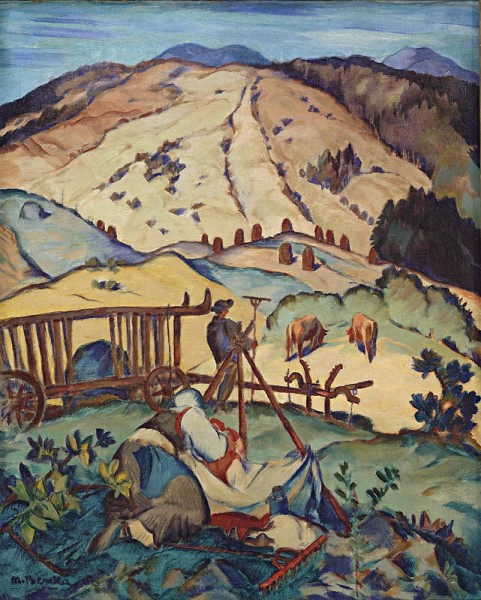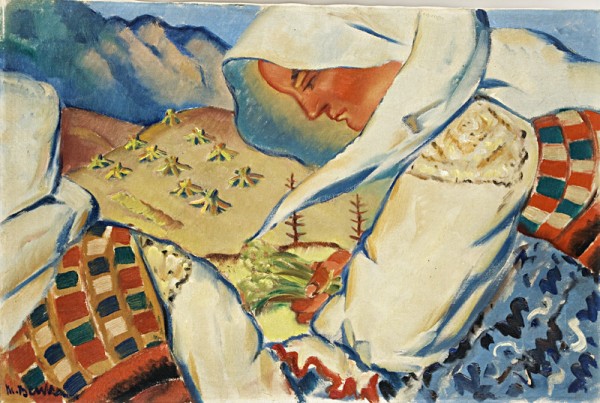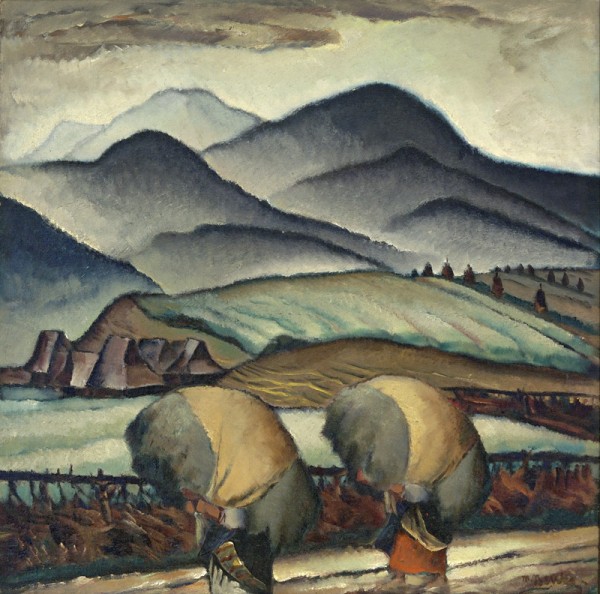Each year during the summer season (July – September),
an exhibition from the cycle Colleagues / Classics Of The Slovak Modernism In The Ľudovít Fulla Gallery will present
a selection of works by one of the classic authors of the Slovak Modernism (Martin Benka, Gustáv Mallý, Miloš Alexander Bazovský, Mikuláš Galanda, Imro Weiner-Kráľ, and other contemporaries of Ľudovít Fulla) in the exhibition hall of the Ľudovít Fulla Gallery in Ružomberok. The exhibitions will present not only the masterpieces of the individual artists, but also their possible mutual relations, ‘influences’ and inspirations. The first exhibition will be devoted to the work of Martin Benka, focusing mainly on the climax of his career from 1930s. All exhibitions will comprise of works from the collection of the Slovak National Gallery.
The founder of the national painting style, the magnus parens or the Prince of the Slovak modernist painting,
an alchemist of the Slovak beauty, a truly national artist – many of such epiteton ornans celebrate perhaps the most well-known name in the history of the Slovak fine art. In
a unique style, Martin Benka has defined the typically Slovak – highlander – life, the Slovak mountainous landscape with round and waved hillsides, valleys, the craggy and steep mountains, with strips of ridges and fogs, populated with the lives of its inhabitants: raftsmen, lumberjacks, peasants and shepherds, diggers and hay-rakers, women and men both at work and resting, often bent under their knapsacks or leaning over a field cradle... He admired the intrinsically free and natural existence of the Slovak man living in harmony with the nature and its laws. In his work, Benka sought for an idealised image of the Slovak mountainous land, together with the plebeian nature of its inhabitants. An image that should evoke feelings of stability, the timelessness of being, the cosmic unity of the human and the natural. Even though he employed the expressional language of modern painting, ideologically he connected with the romantic heritage of the 19th century, adopting as his own the protomyth of the Slovak way of thinking – the patriarchal, ethical and undisturbed nature of the Slovak rural people and its life. And he has achieved this goal in a way that remains fascinating to the present day. In somewhat archaic words, nevertheless very precisely, writer Milo Urban managed to describe how Benka succeeded: “He was not conquering heavens. He remained somewhere under the hills, by the farmlands, meadows, clearings, always searching for people – as if each and every one of his paintings wanted to remind us that the beauty without the people and their toil is dead, devoid of meaning. That is why his paintings work: they are – and will remain – alive; they tell us something and will keep on telling it even when this world will change beyond recognition, when – let’s put it this way – we will not ride to hayfields in horse cart, but fly on a helicopter...” Indeed, our world has changed, but Benka’s image of Slovakia is still capable of moving with nostalgia, attacking our emotions and subconsciousness. He succeeded in creating an artistically unique metaphor of the past, in materialising something significant from the mentality of the Slovak man, in making visible the spiritual roots of our existence. Something fabulous and mythical...
Martin Benka (1888 – 1971) is one of the founders of the modern Slovak painting. He studied privately in Prague with professor Alois Kalvoda (1909 – 1914). His work is based on the post-impressionistic landscape painting, however, he soon turned to decorative and symbolic principles of the Art Nouveau painting, partially drawing also on expressionism. In 1913, he visited Slovakia for the first time, and starting in 1920s, his work features almost exclusively portrayals of motives from rural Slovak and its mountainous landscapes. Even though he lived in Prague, he visited Slovakia frequently, where he collected inspiration for his work, and painted. During 1930s, he arrived at his characteristic and original monumental style, his work becoming an example for the younger generation of artists. In 1939, he moved from Prague to Martin in Slovakia, where he lived and worked until his death. His work includes both intimate and monumental paintings, drawings, graphics, publishing and illustrations. He bequeathed his work to the nation; it is now governed by the Slovak National Museum – the Martin Benka Museum in Martin.



